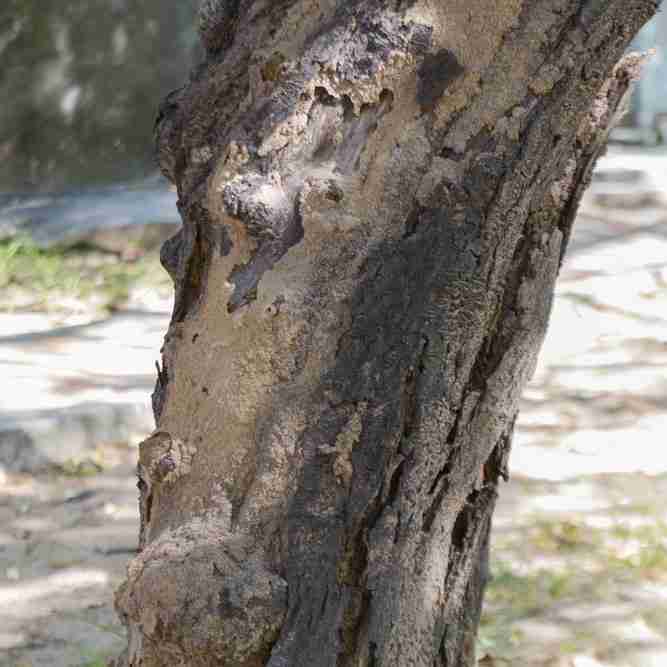Trees are a vital part of our ecosystem, providing shade, beauty, and oxygen while supporting various wildlife. However, maintaining healthy trees requires more than occasional watering or fertilizing. One essential aspect of tree care is deadwood removal—a process often overlooked but crucial for preventing diseases and promoting healthy growth. This article explores how removing deadwood can help trees thrive and protect them from potential hazards.
What is Deadwood Removal?
Deadwood removal involves cutting off dead, dying, or decaying branches from a tree. These lifeless branches no longer contribute to the tree’s growth and can often become breeding grounds for pests and diseases. Factors like age, weather conditions, disease, or physical damage can lead to deadwood forming on trees.
Dead branches are easy to spot due to their brittle texture, lack of leaves, and discolored appearance. Regular removal helps improve the tree’s overall structure, boosts its longevity, and reduces risks associated with falling branches.
Why Does Deadwood Form?
There are several reasons why deadwood appears on trees:
- Natural aging process: As trees age, some branches may naturally die off.
- Disease and pests: Infestations can damage branches, cutting off their nutrient supply.
- Weather damage: Strong winds, frost, or lightning can break branches or weaken their structure.
- Environmental stress: Drought, pollution, or soil compaction can weaken a tree’s health and lead to dead branches.
The Importance of Deadwood Removal
Deadwood isn’t just an aesthetic issue; it poses several threats to the tree’s health and surrounding environment. Here’s why deadwood removal is essential:
1. Prevents the Spread of Disease
One of the most critical benefits of deadwood removal is disease prevention. Dead branches can become entry points for fungi, bacteria, and pests. If left unattended, these infections can spread from the deadwood to healthy areas of the tree, potentially leading to irreversible damage.
By cutting off affected branches early, you stop diseases from spreading and give your tree a better chance at survival. Regular inspections and timely pruning are vital in keeping trees disease-free.
2. Encourages Healthy Growth
Removing deadwood allows trees to focus their energy on healthy branches and new growth. Dead branches waste the tree’s resources as it continues to send nutrients to non-functional parts. Once these dead branches are removed, the tree redirects its resources to new shoots, leaves, and fruit-bearing branches, promoting overall vitality.
Additionally, opening up the tree’s canopy allows better air circulation and sunlight penetration, which are crucial for photosynthesis and robust growth.
3. Reduces Safety Hazards
Deadwood can be a significant safety hazard, especially in residential areas, parks, or near walkways. Dead branches can fall unexpectedly during storms or even on calm days, posing risks to people, vehicles, and property. Regular deadwood removal minimizes these hazards by eliminating weak and unstable branches before they fall naturally.
4. Improves Aesthetic Appeal
Dead branches can make a tree look unkempt and unhealthy. Removing these unsightly branches enhances the tree’s appearance, making it look well-maintained and vibrant. This is particularly important in landscaped gardens, parks, or commercial areas where aesthetics play a significant role.
5. Prevents Pest Infestations
Decaying wood attracts pests like termites, beetles, and other wood-boring insects. These pests not only damage the deadwood but may also move on to healthy parts of the tree or nearby structures. Regular deadwood removal cuts off the habitat for these pests, reducing the risk of infestations.
How to Identify Deadwood
Before removing deadwood, it’s essential to identify which branches are dead. Here are some signs to look out for:
- Brittle texture: Dead branches snap easily when bent.
- No leaves: Dead branches won’t produce leaves even during growing seasons.
- Discoloration: Deadwood often turns grey or brown, different from the rest of the tree.
- Hollow sound: Tapping a dead branch will produce a hollow sound, indicating the absence of healthy wood inside.
- Fungal growth: Mushrooms or fungi on branches can indicate decay.
If you’re unsure whether a branch is dead, try a simple scratch test: gently scrape the branch’s bark with a knife or fingernail. If the tissue underneath is green, the branch is alive. If it’s dry and brown, it’s likely dead.
When is the Best Time for Deadwood Removal?
While deadwood removal can be performed at any time of the year, certain seasons are more beneficial:
- Late winter to early spring is ideal because trees are still dormant, and pruning encourages healthy spring growth.
- Summer is a good time for removing deadwood if you notice visible signs of disease or damage.
- Avoid pruning in autumn, as this can stimulate new growth that may not harden before winter, leaving the tree vulnerable.
DIY vs. Professional Deadwood Removal
Small dead branches can often be removed with basic pruning tools like shears or loppers. However, larger trees or high branches require professional help for several reasons:
- Safety: Professionals are trained to handle hazardous situations, especially for tall trees or large branches.
- Proper technique: Arborists know how to make precise cuts that promote healing and prevent damage.
- Disease detection: A professional can spot early signs of disease or infestation that might be overlooked by an untrained eye.
Hiring an expert ensures the tree’s health is preserved while minimizing the risk of accidents.
How Deadwood Removal Improves Tree Structure
Removing deadwood enhances the structural integrity of trees by:
- Reducing the weight of weak branches, preventing breakage.
- Encouraging balanced growth, particularly in ornamental trees that require specific shapes.
- Preventing overcrowding in the canopy, allowing more space for healthy branches to grow.
Regular trimming maintains the tree’s form and reduces the likelihood of limb failure.
Environmental Benefits of Deadwood Removal
While some deadwood can serve as habitats for wildlife, excessive dead branches pose ecological risks. Here’s how responsible deadwood removal supports the environment:
- Encourages healthier trees that absorb more carbon dioxide.
- Reduces pest populations that might harm nearby trees or plants.
- Maintains biodiversity by supporting healthy growth patterns for surrounding vegetation.
Final Thoughts: Invest in Tree Health with Deadwood Removal
Regular deadwood removal is an essential aspect of tree care that promotes health, enhances growth, and prevents disease. It’s not just about maintaining appearances—removing deadwood protects the tree, the surrounding environment, and anyone near it.
Whether you’re a homeowner or a commercial property manager, scheduling regular tree inspections and maintenance ensures that your trees remain strong, beautiful, and safe for years to come. If you’re unsure about the condition of your trees, consult a professional arborist for expert advice and safe deadwood removal.





